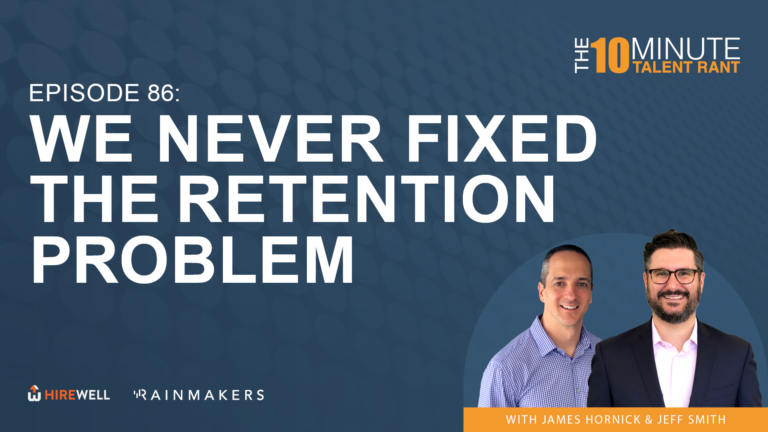We’ve all been there; you’re actively (or passively) on the search for new job opportunities and while your network has proven useful, everyone still needs to send in multiple cold applications to job postings. You click on the apply button and up pops a series of grueling sign-on steps, redundant questions, clunky ‘copy/paste’ workflows and everything in between. All of these items (both important and very much not important) are driven by the applicant tracking system (ATS) the organization is using to post, collect and administer their recruiting process.
If you’ve always thought that the first barrier to getting an interview is based solely on the judgement of internal HR, internal recruiting, or an external source, think again! Resume filtering (due to volume and lack of resources) has become a growing trend within companies large and small. They use these tools to filter out resumes before an actual human even reviews it. You read that right; we can all but guarantee that a few of those 30-40 minute applications that you filled out were never even reviewed by a recruiter.
So what do you know about ATS’s? If the answer is ‘not much’ other than they are incredibly annoying (they are) then you’re missing out on a few opportunities to get noticed. In this article, we’ll talk about what an ATS is, how they work, and most importantly, how to use them to your advantage.
1. What are Applicant Tracking Systems?
Put simply, ATS’s are software packages that provide recruiting and hiring tools for company HR and Recruiting teams. They perform a variety of tasks but at the heart of it all, they advertise jobs as well as collect and sort thousands of resumes from those marketing efforts.
When you apply to a job online, your resume in almost all instances won’t get filtered directly to a recruiter or hiring manager’s inbox. Rather, it’s first being algorithmically processed by the ATS the organization has chosen. The chances an actual human ever sees or reviews your resume could depend solely on how well your resume or cover letter is optimized to the formula. I know, it’s disheartening. So why do companies use these systems?
The short answer? Volume. Even the smallest companies receive hundreds of resumes for market center job postings. Applying for a job has become ‘easier’ than ever (albeit no less frustrating) so many applicants send their applications without even reading the job description or figuring it’s all worth an attempt to get lucky. That puts overwhelming pressure on the review process internally. These systems keep applications in one place, helping recruiters and hiring managers stay organized. Most systems have some form of ‘rating’ system that essentially filters keywords in resumes to ‘guide’ the hiring teams to the ‘preferred’ candidates. Let us be clear; this absolutely saves time, and yes, the algorithms work in theory, but top candidates consistently fall through the cracks for a variety of reasons, which we’ll cover later on.
You can’t escape them. Every company has or will utilize an ATS for recruiting. The volume dictates its necessity. So let’s dive into how they actually work.
2. How do Applicant Tracking Systems work?
ATS’s collect and store resumes in a database for recruiters, hiring managers, and HR employees to access. Resumes could be stored for a really long time after the original application, and internal recruiters can search the database in the future for candidates that have applied in the past. In sum, when you apply to a job at XYZ Company, you’re giving them access to your resume and contact information for not only the job you’ve applied for, but also future opportunities (which is inherently a good thing).
Recruiters view resumes in a variety of ways. Some choose to view applicants in a short form process (think quick hits on achievements, education, titles and tenure). Within 6 seconds, recruiters could make a determination on your application using ONLY these quick hits. We’ll talk about how to make these skills jump out later on.
ATS’s, for the most part, incorporate some version of a ‘ranking system’ to highlight desirable applications (based on an algorithm). It’s typically a percentage score (82% match) or a grading system (A-F). Our worry, and unfortunately it’s been well founded, is that recruiters are leaning too heavily on this automation to select candidates to speak with. That being said, it’s the reality of the software so we’ll talk about how to increase your score in section 3.
Recruiters also have the luxury of using keyword searches to filter resumes in an ATS. For example, there are many versions of the job “Project Manager”. A recruiter might be looking for a project manager that has experience driving initiatives in IT procurement specifically. As such, they will not only search “project manager” but they will also search words like ‘procurement, infrastructure, machines, networking, laptop{s}, etc). Keep this tactic in mind when writing your resume; if you can predict what keywords we’ll use to find you, odds are we will!
3. So, how do you beat these things?
Unfortunately, it’s hard to answer this without saying you have to get creative as possible. Getting past an ATS and landing an actual interview come down to a well-crafted resume and cover letter that is targeted to mimic the keywords that are listed in the job description. The algorithm’s will love the customization and increase your chances of catching the eye of both our human and AI overlords.
As standard practice, we recommend the following advice to making your application jump out of the pack:
-
Tailor your resume to each job you apply to. Use verbiage that is used in the description in your resume. They say, imitation is the best form of flattery!
-
Use long AND short form (MBA & “Master of Business Administration) or (PM & Project Manager)
-
Absolutely use chronological order when formatting your resume. ATS’s dislike any other format
-
Try your best to keep the formatting as text only to avoid parsing issues
-
Use a normal font. Ornate or expressive fonts also don’t parse well
-
Use standardized section language like {Work Experience}, {Summary}, {Education} as opposed to getting cute with things like {The Journey I’ve Been On…)}
-
Save your file as a docx or pdf ONLY
So where do you start with this resume tailoring? We have just the tool for you. Using Careerwell’s Resume Refinery, you can create multiple versions of your resume that are built to beat the algorithm. Take a look here and get started on your newest versions of your resume now.
Using this knowledge and writing toolbox should help land you more conversations with organizations that you’re really interested in. May the odds be ever in your favor!
If you have any questions or would like to chat, feel free to reach me at jeff@hirewell.com.














